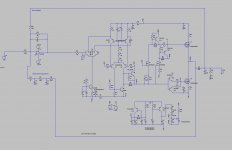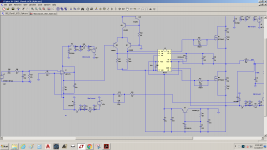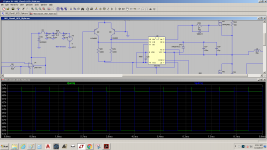Did you read it by youself?I guess not.
I have ears and my head is clear
Sorry, wrong link 😀
Should be here:
http://www.diyaudio.com/forums/class-d/108343-class-d-behavior-clipping.html
I am talking hard clipping.
It is depend also for how big your amp and the speaker as well.
For mine, I use big 18" speaker about 1000W 8 ohm.
It is depend also for how big your amp and the speaker as well.
For mine, I use big 18" speaker about 1000W 8 ohm.
My words copied:Sorry, wrong link
........Well designed ones clip cleanly, although I have had prototypes exhibit some 'raggedness' on the output just before clipping.......
If it bothers you to much , make softclipping in your amps - it's so easy.......I am talking hard clipping.

But if power supply voltage sometimes people dont follow designer i.e. too low then hard clipping will there. That the krakk sounds will get
You are using IR2110 ? Try IR2010
No I use a discrete power comparator for simplicity and to need only one supply,
I have this schematic who do stop when sound is off..
Attachments
I would like to try the UCD with single supply and full bridge can anyone share the LTspice file for the IR2110 and the LM311 model?
I have many working projects , but they are mostly not UcD based . I don't like UcD - due to it's low loopgain it has heightened distortion , and if increase loopgain - it becomes unstable. I only use UcD for high (>1000W) power subamps, where THD is not the main criterion . And due to postfilter feedback can use less expensive output inductor, something like sendust ring cores....
Here is my old UcD bridge , cliplimiter on board.
UCD can get low HD when properly designed, multipole settings with low pass filters, ucd is self oscillating, best is design d amp who has without feedback already lwo HD, that is challencing but maybe a good step up for high end where there is not much yet.
I would like to try the UCD with single supply and full bridge can anyone share the LTspice file for the IR2110 and the LM311 model?
Here she are.
Attachments
wow thank you will post some sims soon.Here she are.
I have a question about the Class D for subwoofer application. Do they have stability issues when either load is not connected or for extreme low frequencies?
The fundamental reason why i want to consider the full bridge and single supply is to avoid the bus pumping effect and i believe this circuit is also with post feedback so the DF could be more.
Did anyone tried this UCD with subwoofers with extreme usage in like PA with good results? I want to drive 21LW1400 from eighteen sound with excellent grip.
Hi there are no S and BAL pins on the 311 spicesHere she are.
Tried simulating but im getting error as there are no lib files for the IR2110
I did have the same, and I have the lib and sub, here she are, maybe you can find out, ltspice is sometimes difficult.
you can use .include IR21XX.lib but I did see I have a error with pins.
Attachments
wow thank you will post some sims soon.
I have a question about the Class D for subwoofer application. Do they have stability issues when either load is not connected or for extreme low frequencies?
The fundamental reason why i want to consider the full bridge and single supply is to avoid the bus pumping effect and i believe this circuit is also with post feedback so the DF could be more.
Did anyone tried this UCD with subwoofers with extreme usage in like PA with good results? I want to drive 21LW1400 from eighteen sound with excellent grip.
I believe full bridge do also not have problems with bus pumping.
here some info.
http://www.irf.com/product-info/audio/classdtutorial606.pdf
In class D clipping sounds worse.
As I told before that during momentary clipping for self oscillating class D, PWM will stop for a moment and only pure DC will flow to speaker. And after clipping, it needs time to restart again the PWM. This event makes clipping in class D is worse than class AB.
It seems you don't have experience at all. 😀
Experience is your privilege. Nobody else has it, unless he agrees with you. 😛
ClassD clipping sound worse only if you make it wrong. If you do it right it returns to normal operation immediately after clipping. I also fallen to this error in my first big classD amp, but I didn't accept it, found the problem and corrected it.
I have many working projects , but they are mostly not UcD based . I don't like UcD - due to it's low loopgain it has heightened distortion , and if increase loopgain - it becomes unstable. I only use UcD for high (>1000W) power subamps, where THD is not the main criterion . And due to postfilter feedback can use less expensive output inductor, something like sendust ring cores....
Here is my old UcD bridge , cliplimiter on board.
thanks dimonis for sharing .nice layout .please post schematic of the project.
by the way which topology do you use nowadays of your class d amps??
can anybody please tell me whats wrong in the schematic?
Probably the input polarity of comparator. The polarity definition changes when you use the other output.
- Home
- Amplifiers
- Class D
- UCD 25 watts to 1200 watts using 2 mosfets


